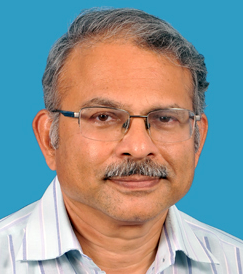Ever wondered why your mobile and laptop adaptors heat up while charging? It is due to Joule heating in power devices, which is a major concern for applications ranging from electric automobiles to household, industrial and defense machineries. In fact, the energy lost in conventional Silicon based power devices is more than the net energy harvested from all renewable sources combined!
Several ideas on reducing these losses have been exploited so far. These include changing the material from Silicon to Silicon Carbide (SiC) and / or the device structure from simple junction to Super Junction (SJ), and we are now on the verge of their limits. So, will the technologies progress further?
In this line, researchers in Prof. Karmalkar’s Lab at IIT Madras might be among the forerunners with their ‘Charge Sheet Super Junction (CSSJ)’ device which holds potentially great advantages including a relatively easier fabrication process. The researchers introduced this idea to the scientific community earlier in the context of Si material, and expanded it to cover SiC material in an international conference some months ago. This was among the select conference works published in the special issue of the IEEE Journal of Electron Devices Society in September 2020. The editors who selected this paper for the special issue of this prestigious journal remarked in their foreword that CSSJ is “a great future device option.”
To fully appreciate the advantages of CSSJ, one has to be aware of the expectations from an ideal power device. Imagine you own an electric car. The battery voltage supplied to the engine is regulated by a power device. When you want to drive at top speed, you want the entire battery voltage to be made available to the engine which means the power device should offer negligibly low electrical resistance (specific on-resistance, Ron). In contrast, when you want to stop your car, you do not want any battery voltage to be fed to the engine. In this case the entire voltage has to be withstood by the power device and hence it must have high voltage withstanding capability (breakdown voltage, VBR). Much of the power device research in the past has striven to achieve these contrasting requirements of low Ron and high VBR simultaneously.
Conventionally, simple p-n junction based Silicon devices were used. However, later it was shown that if the n- layer of the p-n junction is replaced by a stack of alternating thin p-n pillars, called a ‘SuperJunction’ (SJ), the specific on-resistance can be significantly reduced. Further, after realizing the advantage of SiC over Si for power devices, attempts to fabricate SJ in SiC were reported. However, due to several practicability issues including the difficulty of realizing thin p- pillars in SiC, these devices could not be made available in the market, so far.
A solution to this problem has been proposed by Prof. Shreepad Karmalkar, his current PhD student Akshay K. and his ex-MS student S. Srikanth at IIT Madras. They came up with a new idea of replacing SJ pillars of p-type material by Aluminium Oxide / Silicon Dioxide bilayer insulator. A negative charge sheet is formed at the insulator interface that can simulate the effect of p-pillar and whose magnitude can be controllably varied depending on the application it is to be used for. Akshay, who holds the prestigious Prime Minister’s Research Fellowship, studied the practicability of CSSJ in SiC material and came up with its design for a wide range of applications with breakdown voltage from one to ten kilo Volts while minimizing the specific on-resistance (Ron). In addition to avoiding the p-pillar fabrication problem, he found that the implementation of the CSSJ in SiC can lower the VBR sensitivity to charge imbalance due to process variations by ten times, and can also lower the specific on-resistance, Ron, by 5-45% in comparison to the SiC superjunction. A lower Ron leads to lower heating losses and in turn cheaper and lighter cooling requirements.

Prof. Shreepad Karmalkar 
Akshay K 
S. Srikanth
Prof. Anant Agarwal of Ohio State University who is an international expert on power devices and an IEEE Fellow remarked – “Replacement of the p-pillar of a superjunction by an aluminum oxide/silicon dioxide insulating layer can simplify the fabrication of a SiC superjunction significantly. I eagerly look forward to realization of this interesting idea.” Dr. Harshad Mehta, President and CEO of Silicon Power, USA, said – “The new device structure developed by the bright minds at IITM under the leadership of Prof Karmalkar, is very promising and intriguing for the high power electronics applications. We are truly excited at Silicon Power and our SiC fabrication facility SiCAMORE to provide early manufacturing support to commercialize this unique technology.”
Using the electric car example, Akshay said that if their SiC CSSJ is practically demonstrated people could drive much longer for a single battery charge!
Article by Mywish Anand
Here is the link to the research article:
https://ieeexplore.ieee.org/document/9186681









